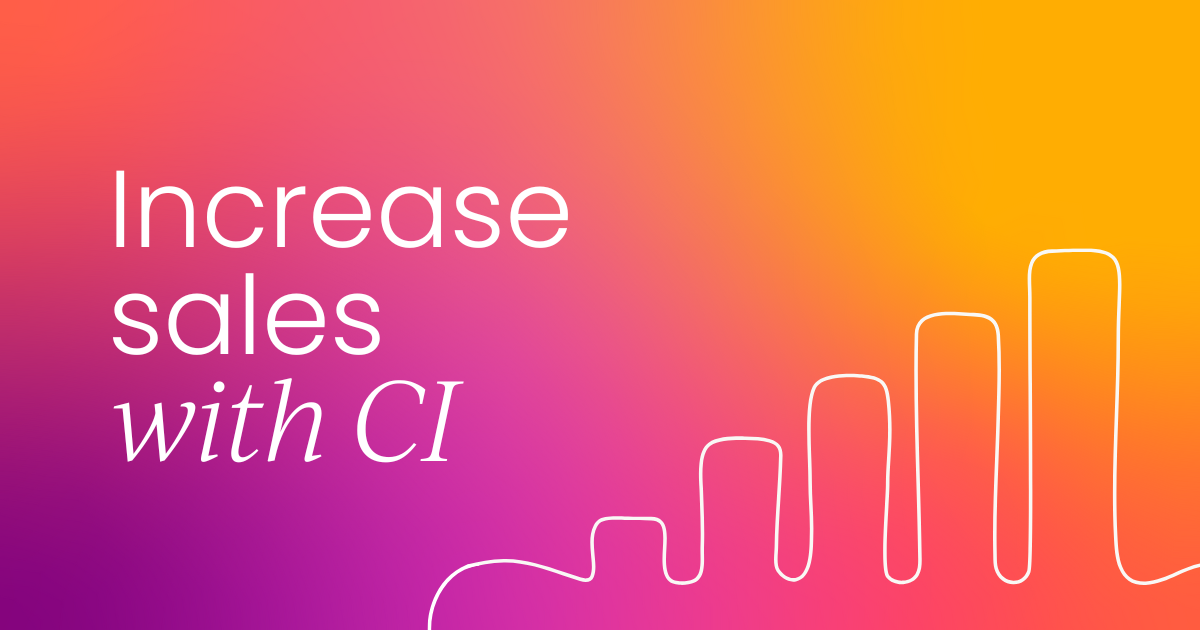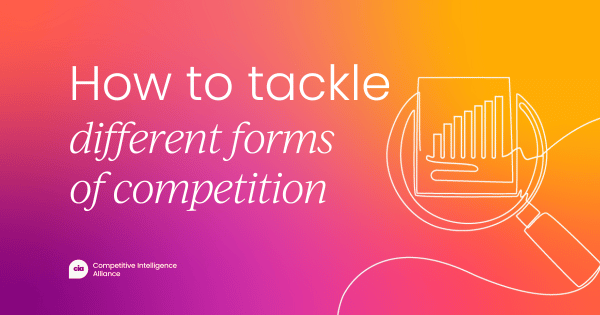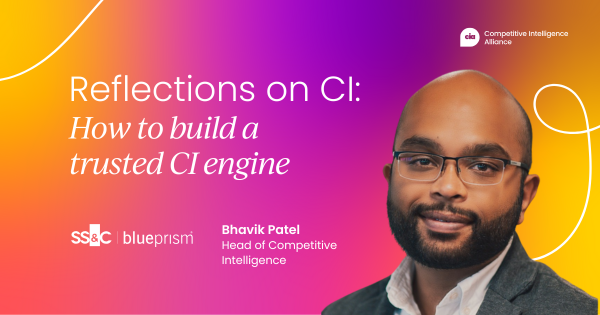This article is based on a talk from our Competitive Intelligence Summit, when Monique Eddleton was Head of Global Competitive Intelligence at Qualtrics – she’s now the Director of Sales Strategy and Event at Paylocity.
I want to take you through my perspective on building a world-class win/loss program: what’s worked for me, the lessons I’ve learned the hard way, and how you can set yourself up for success.
I’ve been in competitive intelligence (CI) for a long time (since 1998) back when most of us didn’t even know that’s what the work was called.
I started out at Kearney, moved into Capital One’s new product innovation group, then went on to lead competitive intelligence teams at ADP, Equifax, and now Qualtrics.
Along the way, I discovered that my sweet spot is bringing the customer’s voice into competitive analysis.
It’s not enough to watch what our competitors are doing; we have to hear from the people they’re selling to (and from the people buying from us) so we can pressure-test our competitive assumptions.
Win/loss analysis is one of the best tools for that. And when you do it right, it’s more than a research project. It’s also a business metric, a decision-making engine, and sometimes even a cultural shift inside the company.

Why win/loss matters
It’s easy in CI to get caught up in competitor obsession. I’ve seen companies make major strategic decisions based on incomplete competitive snapshots, without validating anything against customer feedback.
That’s how you end up building features no one wants, or chasing a positioning angle that falls flat.
Win/loss breaks that cycle. It forces you to balance competitor insight with customer reality. It tells you why you’re winning, why you’re losing, and, equally important, what you’re doing right that you should double down on.
And let’s be clear: win/loss doesn’t just help sales. It touches product, marketing, customer success, and even finance. The more you connect it to actual business metrics, the more weight it carries.
My EPIC Framework for program development
Whenever I start a new program, whether it’s something ongoing or a one-off project, I use what I call my EPIC framework: Evaluate, Plan, Insight, Communicate.
1. Evaluate: Know where you’re starting
Before I think about resources, stories, or deliverables, I step back and ask:
- Why are we here?
- What’s happening in the business that led us to launch this program?
- What problems are we trying to solve?
- Where do we want to be in six months, a year, or two years?
This stage is about finding the gaps between today’s reality and tomorrow’s goals. If we skip it, we end up with a program that might be “busy” but not valuable.
2. Plan: Set the stage for success
Once I understand the landscape, I figure out who needs to be involved and how we’ll get there; it’s about stakeholder influence, data ownership, and potential roadblocks.
One thing I’ve learned: get senior-level buy-in early. At ADP, we launched an end-to-end win/loss program – every deal, every customer segment. Naturally, that meant we needed clean CRM data from sales.
Our Global Head of Sales agreed and made it a company mandate. During an all-hands, he said:
“Our CRM data is dirty. That stops now. There are new required fields – competitor, primary contact, email, phone number – and if they’re not filled out, you can’t close an opportunity, you can’t get compensated.”
That single move transformed the program. Data quality skyrocketed overnight because the message came from the top. It was about showing that win/loss was worth protecting.
Without that kind of support, you can still make progress, but it’s slower and harder. With it, you can launch at full speed.

3. Insight: Focus on what you really need to know
One of the most common mistakes I see is leaving the “story” for the end. At that point, you’re wading through mountains of data, unsure what’s relevant.
The fix? Define your objectives before you start.
- Are we trying to improve the win rate?
- Are we testing a product positioning?
- Are we measuring brand awareness?
Those answers shape the questions you ask customers, the deals you target, and the people you involve. They also give you a clear line from data collection to decision-making.
At Qualtrics, for example, we use Clozd to conduct our interviews. We’re deliberate about every question in the interview guide too; if it doesn’t map back to a program objective, it doesn’t make the cut.
And we don’t just talk to customers. Our Voice of Partner program gathers feedback from consulting, implementation, and managed services partners.
Why? Because they’re in the sales process with us, they work with our competitors, and they have a unique vantage point on why deals go the way they do.
4. Communicate and act: Make the data work
You can collect all the data you want, but if it sits in a file somewhere, it’s useless. The final stage is about making insights visible, understandable, and actionable.
At Qualtrics, transparency is part of our culture. Every employee can log into Clozd and read any interview (with sensitive names removed).
When a new interview is published, a notification goes out instantly, and our CEO sees it within minutes. That visibility builds trust in the program and encourages participation.
We also maintain a real-time dashboard showing:
- Win rates against competitors.
- Deals currently in motion (so reps can connect with peers who’ve sold in similar situations).
- Aggregated insights from qualitative and quantitative data.
Our cross-functional task force meets monthly to review fresh data, spot trends, and recommend actions. And here’s a critical point: I don’t own those action plans.
The task force does. They’re the subject matter experts, so they decide whether the answer is a new feature, a sales motion change, or something else entirely.
Building the right team: Be the conductor, not the soloist
Early in my career, I thought I had to be the expert on every market, every competitor, everywhere. That’s like trying to play every instrument in an orchestra, exhausting and impossible.
Now I think of myself as the conductor. My job is to bring the right experts together, set the tempo, and make sure we’re all playing from the same sheet of music.
In win/loss, that means creating a cross-functional team with voices from sales, product marketing, product management, and sometimes customer success or finance.
When they’re involved from the start, they become natural advocates for the program, bringing it up in meetings I’m not even in, and making sure it stays connected to the business.

Managing data challenges
Let’s be real: CRM data is rarely perfect. In some cases, sales teams are faced with hundreds of fields to fill in, many of which have little to do with actual business outcomes.
One of the first things I did at Qualtrics was a sanity check on our CRM requirements, stripping out anything that wasn’t tied to a business metric.
Because here’s the truth: if your win/loss program is a business metric, you protect it the same way you protect revenue numbers or NPS scores. You make sure it’s fed with the best possible data.
Keeping the pipeline healthy
My biggest pet peeve? Opt-outs.
If a deal qualifies for the program, I want it in the program – even if we lost badly, even if the customer is mid-implementation, even if someone thinks “it wasn’t a real deal”.
Every opt-out shrinks the pipeline, and with declining response rates (we’ve gone from ~50% to 30–35% on wins, and 15–20% on losses), you need every opportunity you can get.
Don’t just fix weaknesses, amplify strengths
It’s tempting to treat win/loss as a “problem finder.” And yes, identifying weaknesses is valuable. But some of the best ROI comes from spotting what’s working and scaling it.
That’s how we built a library of top-performing sales motions, complete with supporting materials and feedback. If a team in one region has found a killer way to beat a competitor for a specific use case, others can copy the approach and see similar results.
On the flip side, beware of blindly copying competitors. We once borrowed a sales motion from a rival who was dominating the market. It bombed for us.
Customers were confused, it clashed with our brand, and we alienated strong prospects. Lesson learned: double down on your strengths, don’t chase someone else’s.
Applying win/loss to churn
The exact same process works for churn analysis. We interview customers who leave, especially those who switch to a competitor, and sometimes even reach out to customers who’ve left our competitors.
We also survey long-term renewals to understand what’s keeping them loyal.
The insights from churn analysis feed back into sales, marketing, and product just like win/loss does.

Staying energized in a changing industry
After decades in CI, people ask me how I still have the energy. The truth? I took a break. I spent about six years leading customer experience strategy at Equifax. That distance gave me a fresh perspective.
When I came back, the landscape had shifted: new tools, new players, new expectations. The pendulum had swung: at one point, CI had to be purely strategic at the CEO table; now, there’s renewed emphasis on sales enablement.
What keeps me going is seeing how far we’ve come. When I started, “competitive intelligence” often drew blank stares.
Now, it’s recognized as critical to growth. The industry’s maturing, new people are entering all the time, and the work we do has more impact than ever.
Final thoughts
A world-class win/loss program isn’t about collecting data for the sake of it. It’s about:
- Defining your objectives upfront so you’re not scrambling at the end.
- Building a cross-functional team and acting as the conductor, not the soloist.
- Balancing qualitative and quantitative data, with clear ties to business metrics.
- Making the program visible, transparent, and actionable.
- Scaling what works, not just fixing what’s broken.
Done right, win/loss goes beyond a research exercise and into a competitive advantage, a culture shift, and a growth engine.








.png?v=4917c1c27c)